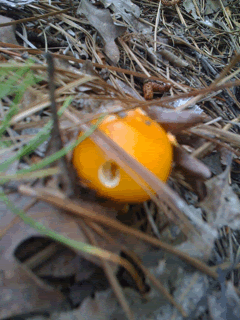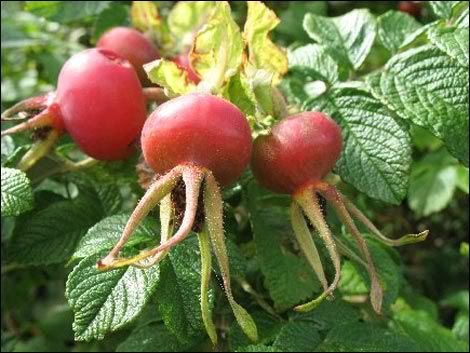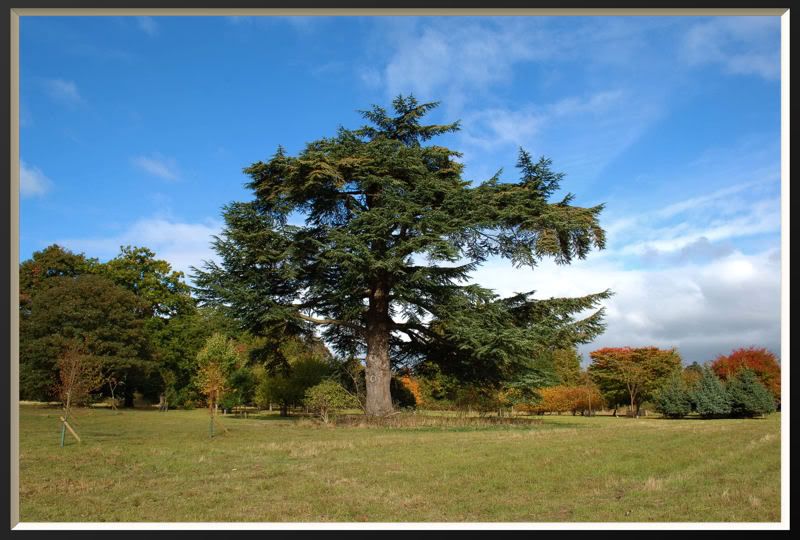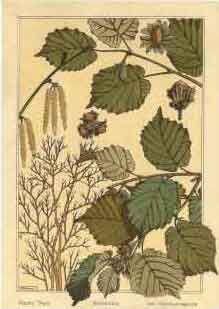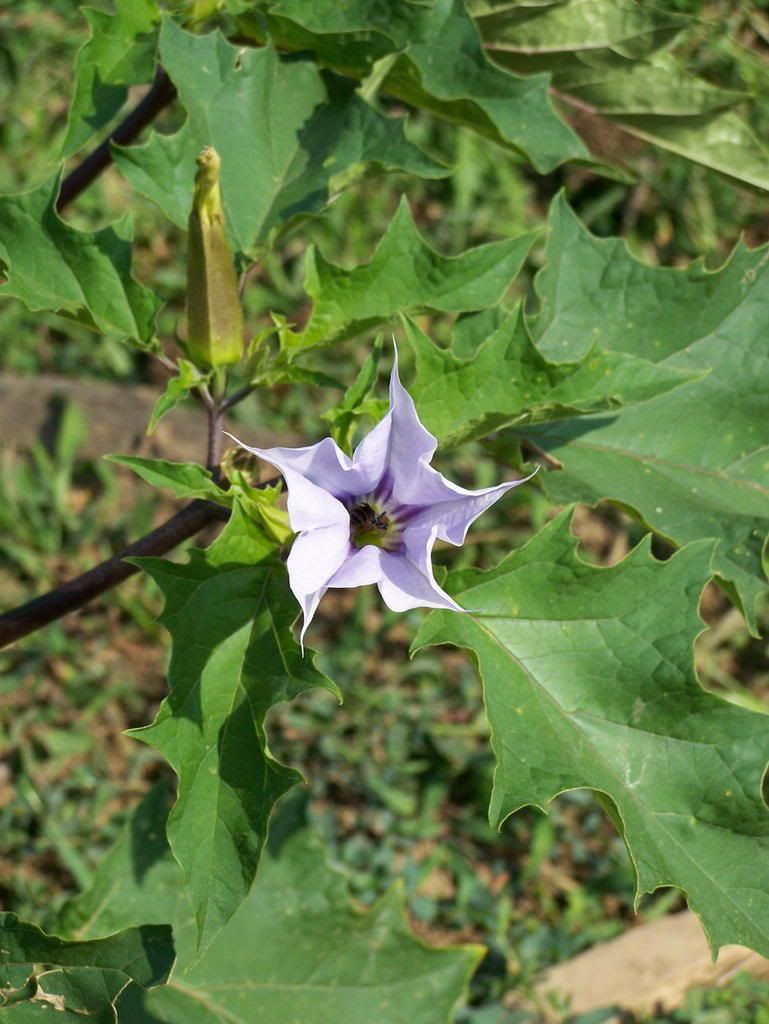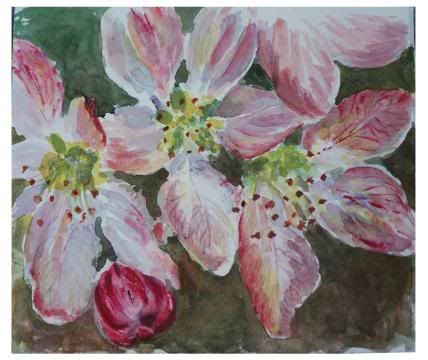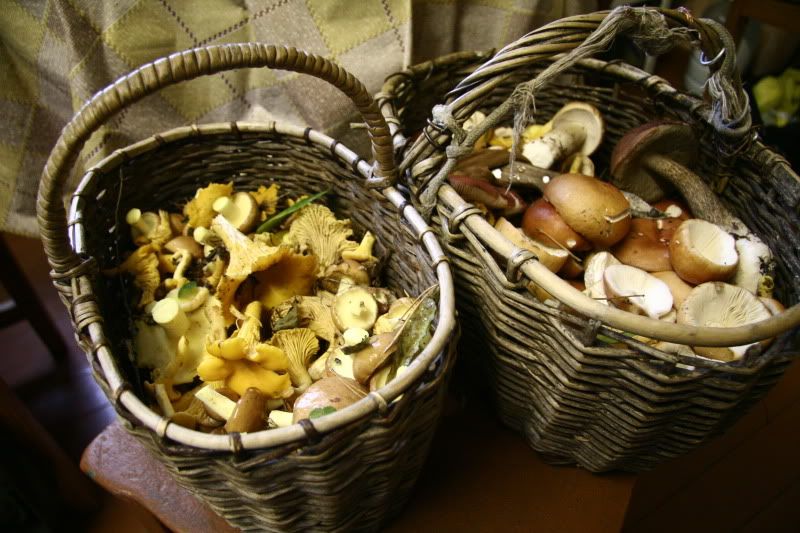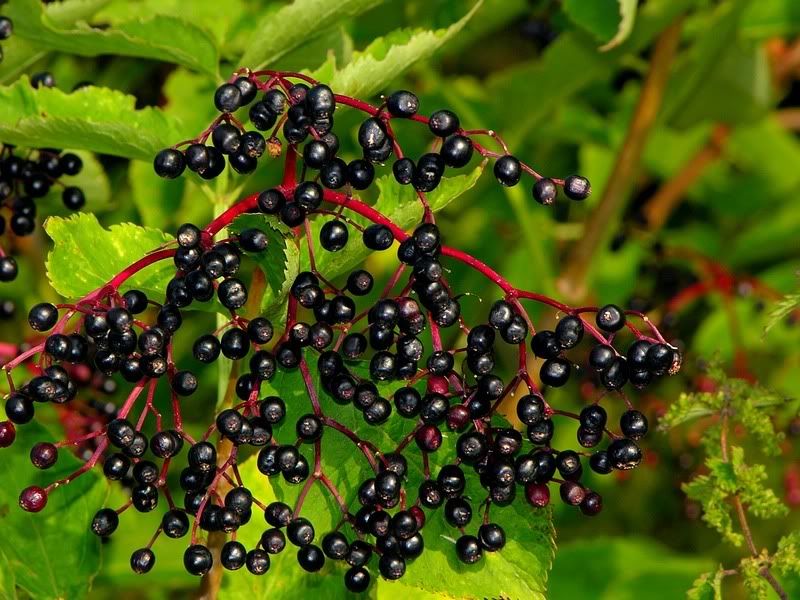
Where does life come from and whence does it go? Even modern science does not know the answer for sure. To our ancestors the mysteries of life and death were solely in the hands of the Gods and the gift of life and fertility was their blessing to grant or to withhold. The Earth's power of regeneration, a woman's ability to give birth and the fruitfulness in all of nature was regarded as a divine gift.

Fertility is the basis of life, the foundation of the health and wealth of a community. An abundant harvest provides sustenance throughout the year, nourishing people and animals and giving them health and strength to fortify them against the physical challenges of daily life. Healthy children are the future of a society and the seeds of survival for the whole clan. The fertility of the animals was equally important, as a strong herd of cattle with healthy offspring provides not only a variety of foods and different material resources, but also stock for trade and barter.
The fertility and health of all life, whether cultivated or wild, animal, human or plant are integral and equally important to the harmonious and sustained well-being of the whole web of life. Our ancestors regarded the earth as the living body of the Earth Goddess that continuously gave birth to existence; the source of life itself. Yet, life lives on life, the cycle of existence is a continuous self-devouring and self-recreating process of transformation and regeneration. All life must die and yet, death is a sacrifice to life that ultimately ensures its continuity. Thus, to our ancestors life and death were not so much seen as opposing forces, but rather as two aspects of the same inexplicable mystery.

In many mythologies trees were regarded as the very embodiment of the immortal life force. Their recurrent seasonal cycle of flowering, leafing, fruiting and seeming decay during the winter months, followed by renewal and apparent rebirth each spring provided a living metaphor for the seasons of human life. As spring turns to summer and summer to autumn and autumn to winter, so does youth turn to adulthood, adulthood to old age and old age eventually to death, which in turn imparts its regenerative power to the soul so it can be reborn and return to the land of the living once more.
Many cultures still believe in a life after death, in a world populated by spirits and disembodied souls, which is often simply known as 'the Other world'. The threshold to this spirit realm is frequently depicted as a tree, usually a conifer since their evergreen cloak reveals a special affinity with the immortal life force, as only they are able to sustain their green foliage through the dark of winter. While most of nature apparently dies, these serene needle trees carry on the flame of hope for life's eventual return. Thus, it is not surprising that they should be regarded as a suitable refuge for disembodied souls awaiting a new incarnation. Their inherent life force was thought by extension to nurture and sustain the souls of the departed during their respective 'dark season' of death. For this reason graveyards are planted with evergreens and wreaths of pine are laid on graves even to this day. In some regions it was customary to plant a tree directly on a person's grave, which henceforth was thought to 'embody' the soul of the deceased. Surviving relatives could thus communicate with their departed ancestors by addressing the tree.
These ancient concepts are widespread throughout the world and are particularly deep-rooted in animistic cultures that still adhere to a form of ancestor worship. Certain trees, often those growing around a burial ground or guarding the entrance of a village, are associated with the tribal ancestor, who watches over the affairs of the living. These trees are honored and protected by the whole community, for any damage done to them would spell the demise of the whole community. At other times particular trees were thought closely related to a particular family or tribe. The modern image of the family tree is but an ancient relic echoing these traditions of the past.

Some mythologies trace the very origin of the human race to trees. Variously, stories are told of Gods who carved the first couple from different species of trees, or how the first man and woman emerged from the seeds or fruits of certain trees, or how the first humans emerged from the trunk of a tree. In Norse mythology we are told that Odin and his brothers were walking by the seashore when they came across two trees. They changed them into the first man and a woman and named the man 'Ask' and the woman 'Embla'. Each of the brothers bestowed some special gifts on them: the first gave them soul and life, the second wit and motivation and the third speech, sight and hearing.
In Europe the image of the immortal tree of life was often associated with a sacred spring, a symbolic river of life, which flowed from beneath its roots. In Britain for example, where many Christian churches were simply built on top of previously sacred sites, an ancient Yew tree is frequently found growing in the churchyard in close proximity to a sacred spring. It was thought that the holy waters would eventually return the disembodied souls to a new earthly incarnation. Hence, the belief that a woman could become pregnant simply by resting under certain trees or bathing in a sacred spring.
In Australia some tribes believe that the souls of babies dwell in trees and that women who want to conceive have to shake them out of the branches, much as one would when harvesting ripe fruit. When a baby was born it was customary to bury its umbilical chord along with the placenta beneath a young sapling, and thus the two souls were spiritually connected throughout their lives. The welfare of one was thought to affect or indicate the well-being of the other; if the tree was harmed the person likewise would suffer, if the person was harmed or killed surely the tree would soon also perish.
Similarly, it was customary in many European countries to plant a tree for each baby that was born. In Germany and Austria an apple tree was planted for a boy and a pear tree for a girl. Native American tribes followed a similar tradition. When a baby was born a tree was dedicated to the young soul and henceforth served as its personal tree ally and natural 'altar'. In Africa and Asia special effigies were carved to serve as protectors for newborns and it was hoped that the particular properties of the tree would be transferred to the child.
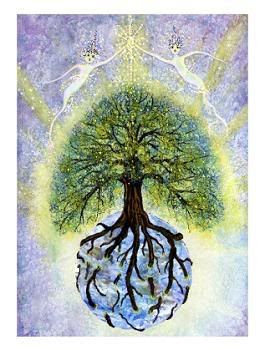
Similar beliefs and practices are known in many cultures across the globe. Particularly in India tree worship associated with fertility rites are common. Offerings are made to particular trees to ask their blessing and aid for conception. Different trees respectively are asked for either a boy or a girl. Sometimes different parts of the same tree are symbolically associated with either male or female fertility. Frequently certain trees are ritually 'married' to each other in order to stimulate fertility in a household. Big feasts are held for the wedding celebration and their future fruitfulness is hoped to rub off on their patrons. Even more curious is the custom of people getting married to a tree, a custom, which applies particularly to a second marriage, since the second marriage between humans is thought to be unlucky. Thus a tree stands in for the second marriage. Both men and women may take a tree in marriage before getting remarried to a person.
Some trees evidently embody the immortal life force more than others, as they are endowed with attributes that suggest a symbolic link with the life giving powers. Hazel bushes for example burst in to a lush abundance of catkins, worm like inflorescence's, that with a bit of imagination could be likened to male sexual organs. Their early flowering time too suggests a special life-giving power - not to mention their highly suggestive nuts, which, depending on the interpretation of the observer could be either likened to male or female sexual characteristics. Thus, Hazel rods often played a role in fertility rites as they were thought to transfer their life giving energies to other forms of life.
Another widespread belief suggests that trees are inhabited by guardian spirits, which control the natural forces responsible for weather conditions, that can cause the crops to flourish or to fail. Since fertilizing rain is paramount to ensuring the fruitfulness of the earth, fertility festivals centered on trees were usually held in the spring or prior to the rainy season. Even in Europe, until quite recently such festivities were quite common and can still be found today as folkloric remnants in many rural areas. The most commonly celebrated fertility festival is known as Beltain or May Day.

When the sap is rising and the buds are swelling and nature is awakening from her winter sleep, the air is humming with energy and activity. It is as though the Goddess Flora twirls and whirls through the countryside and where she dances her footprints turn to flowers, and bees, birds and butterflies buzz about her like twinkling stars. This sensual season culminates in May, when all of nature seems to be intoxicated with the spirit of love: birds and animals are mating, and bees and butterflies are getting drunk on nectarous flower juice. The exuberance and joy of life is tangibly permeating the air and even humans are touched by the juicy flow of nature's libido.
May Day Celebrations
In pre-Christian times this season was celebrated with wild parties and festivities on Beltain Eve, the 1st of May. This festival marked the wedding day of the Earth Goddess and her consort, who were represented by a young couple, the King and Queen of May. The whole community joined in the celebration, often a wild and lewd affair. In the morning a band of youngsters would take to the woods 'to fetch the May', usually a young birch tree, which was brought back into the village with much fanfare. The May tree served as the quintessential symbol of the Earth Goddess herself and her innate powers of regeneration and fertility.

Back in the village the tree would be decorated with colorful threads and ribbons and fixed to the top of a pole, with long flowing ribbons in alternating colors attached beneath it. The May tree was treated as an honored guest and was erected in the most central spot of the village square. Parades and festivities ensued, as the May king and queen strode through town followed by a jeering crowd, accompanied by music, dancing, laughing and singing. Flowers and confetti were strewn all over as tokens of health, wealth and fertility.
Contemporary May Pole Dance, The highlight of the ceremony was the dance around the Maypole. Young boys and girls in succession each grabbed a ribbon from the May tree and twirled around the pole to the wild and cheerful music in an interweaving dance of life - male and female powers woven together to create the very fabric of existence in an act of symbolic co-creation.
Later the Beltain fires were lit to celebrate the return of the sun. Offerings and sacrifices were made to the earth spirits and Gods, and to the animals and plants in the hope that they would return the blessing when harvest came and meanwhile protect cattle and crops from dangerous daemons and diseases throughout the year. The drinking, dancing and feasting continued all night with raucous behavior, rude jokes and lewd innuendos - this was thought to rouse the passion of the vegetation spirit and make it more virile. Youngsters jumped over the Beltain fires to show the corn how high to grow and perhaps to be blessed by the fertilizing powers of this symbolic sun.
Green ManLater in the evening unmarried youth would take to the woods to partake in the libido energy of nature as each couple united as god and goddess to become co-creators in the dance of life and partake in nature's magnificent power. (note: The spirit of vegetation was often personified as Robin Greenwood, the Green Man, etc., nine months after Beltain, a crop of 'illegitimate' children were born, who were generally referred to as 'Robin's sons' - Robinson is still a common family name in Britain.)
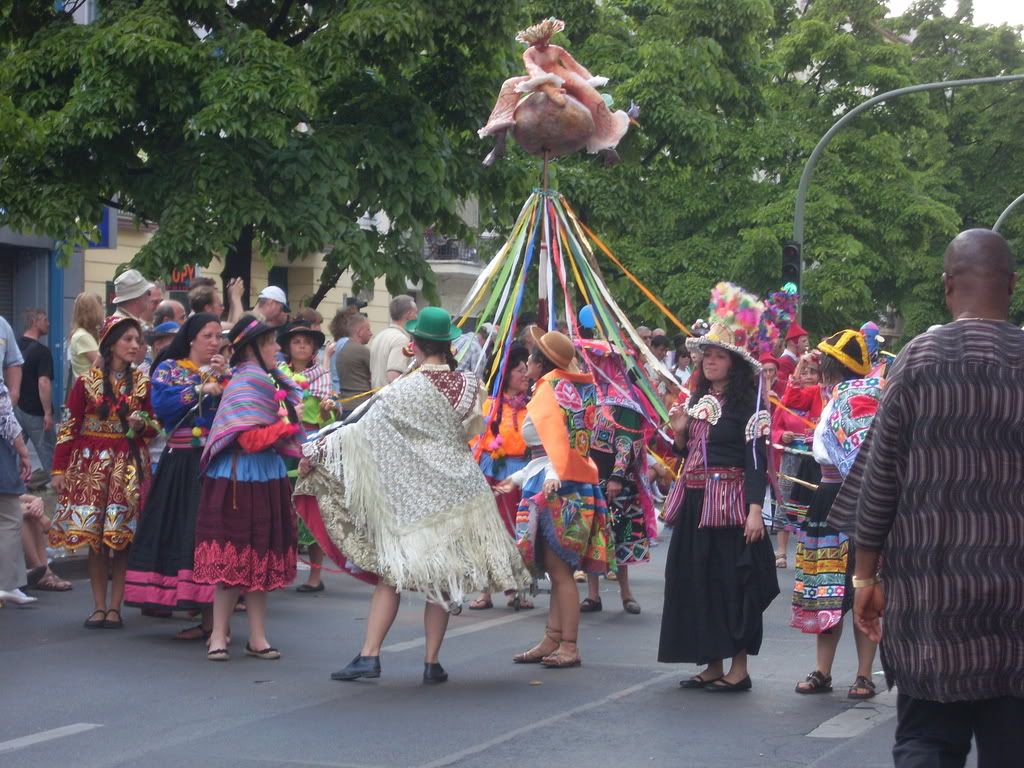
The next morning the Maytree was paraded through town. All the dancing and partying had charged it up with spiritual power and it was now used to bless all the inhabitants of the village so everybody could partake in the abundant gifts of Mother Nature. Sometimes this custom mutated into a ritual of 'quickening' to stimulate the fertility of all females, girls, animals and even (fruit)trees. Special hazel rods were cut for this purpose, which were thought to confer their power of fertility to anything they touched.
These are just a few examples to illustrate the point that at one time all of mankind felt a very close link indeed with the natural environment and with trees and plants in particular. But over time our sense of spirituality has become more and more distanced from nature and divorced from the source of life that sustains us. Neither forests nor individual trees nor herbs or grains are perceived to convey a link to the spiritual realm anymore. Our Gods, as far as we still believe in them are remote and impersonal, inhabiting realms far beyond the sky. Our earthly affairs are reduced to mere mechanical operations designed to exploit natural resources for maximum profit. Not gratitude but dominance characterizes our attitude to nature while reverence and respect for life is diminishing - along with the integrity of the web of life that supports us, and the socio-spiritual web of our communities that once provided a holistic perspective on all of life.
When the mysteries of life are reduced to chemical formulae and the natural world including our own bodies are rationalized and explained as mere chance assortments of matter following mechanical laws that can be manipulated at will, we are loosing touch with the very spiritual essence that gives meaning to existence. We may think ourselves Gods, but it seems that our species is possessed by demons intent on disintegrating the innate connectedness of all life and on poisoning the very source from whence all life springs and to which it must eventually return.
But where can we go from here? How can we heal the dichotomy between matter and spirit and restore that sense of connectedness in this world that is becoming increasingly defragmented? We cannot go back in time and simply do as our ancestors did. Rather, it is a matter of fostering personal relationships with nature and the life-giving powers that sustain us all. It is a personal quest rather than a matter of dogma, of developing an attitude of gratitude and caring towards all life, not as theoretical constructs, but in terms of practical action.

